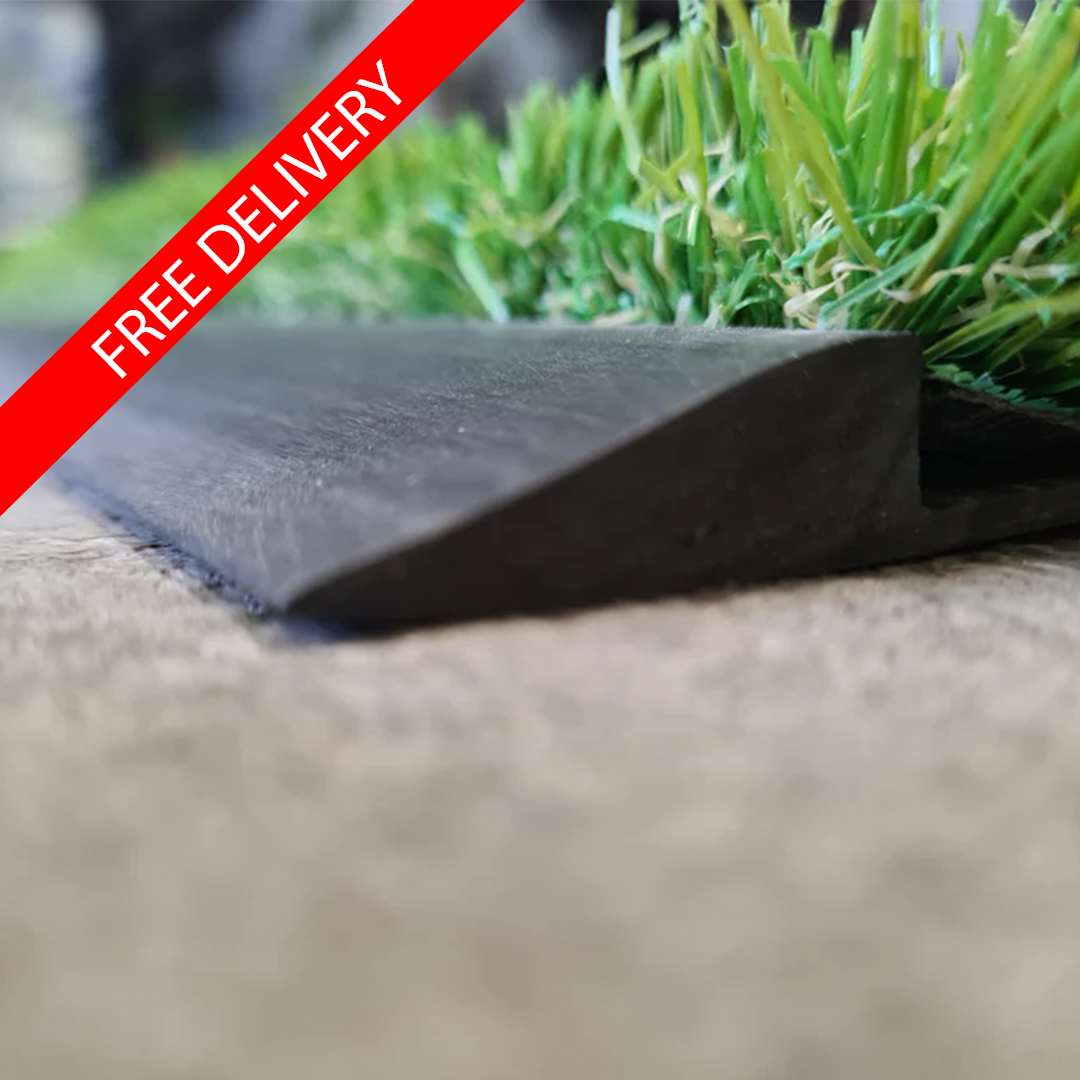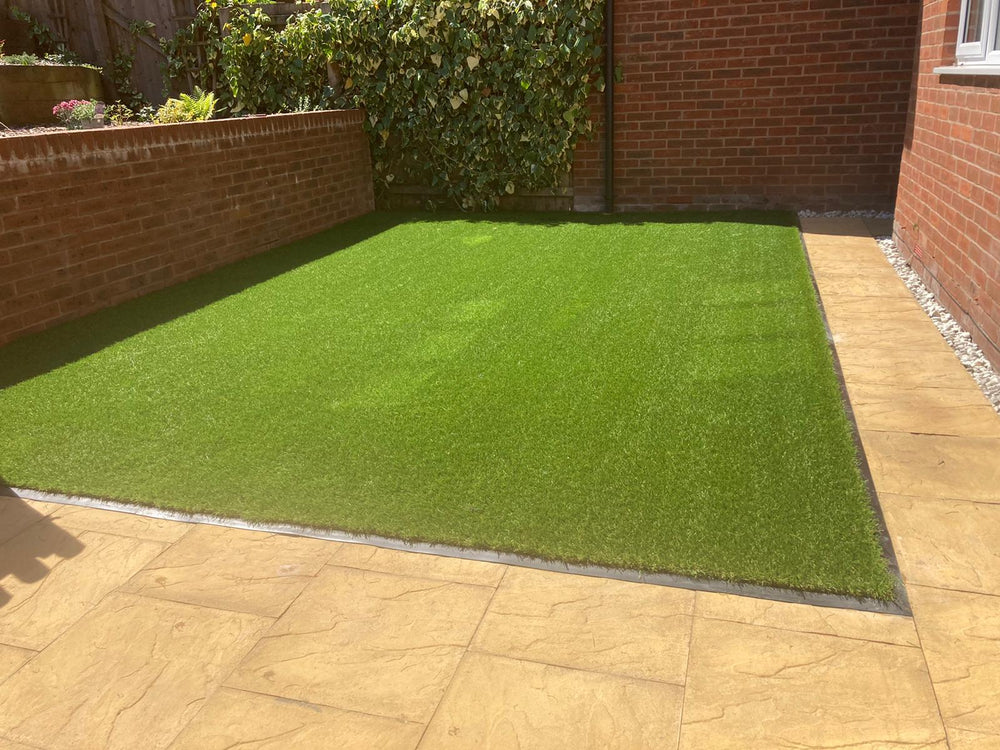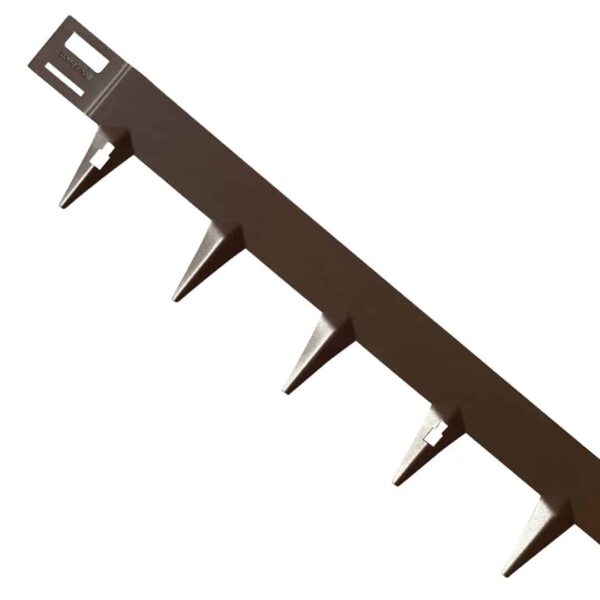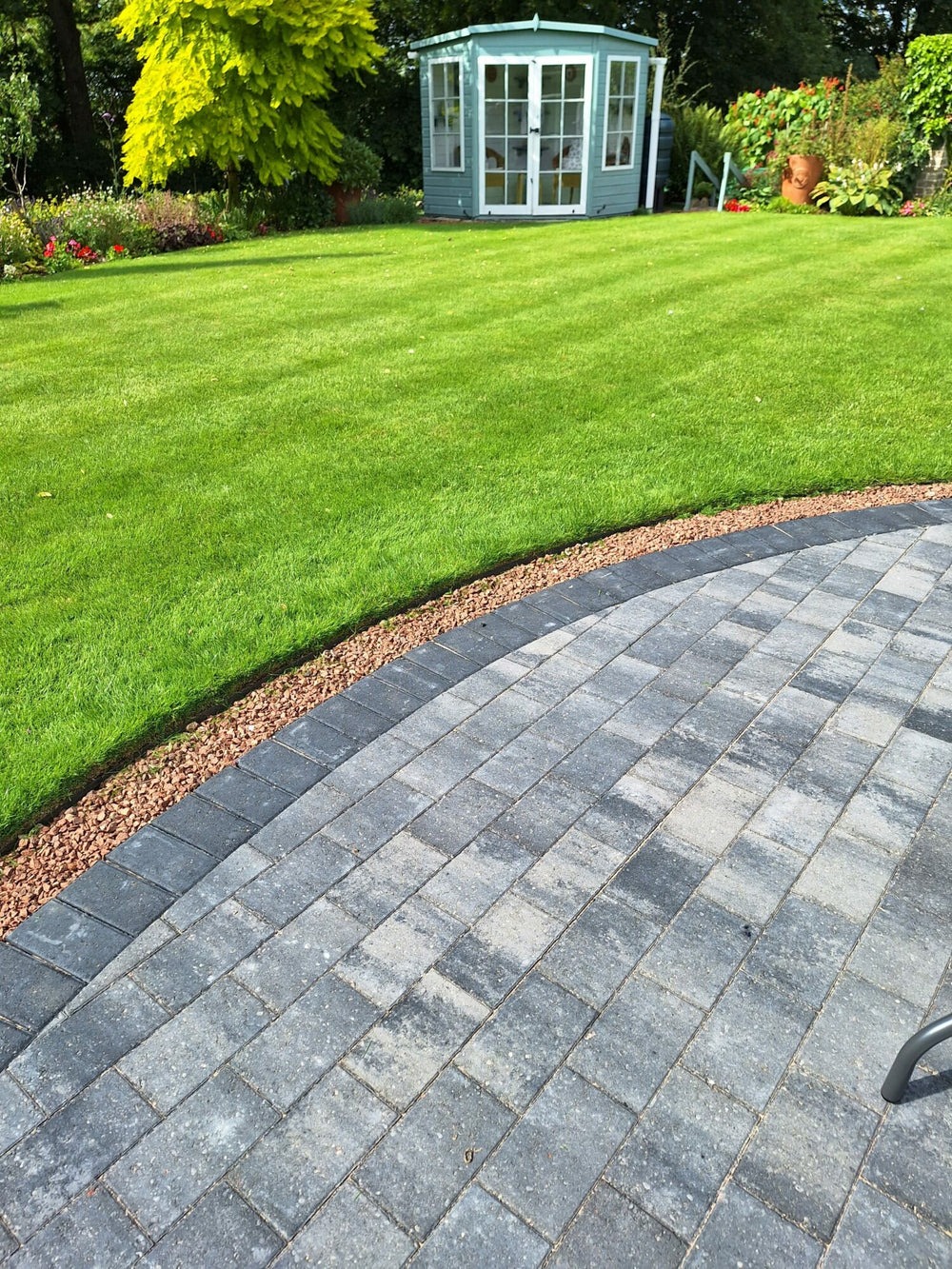Why Artificial Grass Needs Edging
Edging isn’t just about looks. It plays a crucial role in holding the sub-base in place, helping to prevent your lawn from shifting or sinking over time, particularly on exposed edges. A secure perimeter helps to enhance the life of your artificial grass as it prevents and wear that may occur on the edging if it was just loose laid. An edging will allow you to secure your artificial grass around the perimeter of the area, holding it down in place and preventing the grass coming up on its own. Especially important if you have pets or children that use the area and may be tempted to pull at the edges of the grass!
Popular Types of Artificial Grass Edging
- Timber – budget-friendly and easy to work with, but may have a shorter lifespan despite most timber being treated.
- Composite/Plastic – Strong, long lasting, and rot free compared to compared to timber. Composite or plastic edging options can allow you to create smooth curves that you cannot achieve with timber.
- Steel & Aluminium – Durable, Long lasting, modern-looking and perfect for commercial spaces when artificial grass finishes in straight lines.
- Rubber Edging Trim – Durable, flexible, impact-absorbent and ideal where you want a smooth transition from artificial grass to other surfaces.
- Concrete/Sand & Cement – allows you to create precise, bespoke perimeters however often more time-consuming to install.
Quick Installation Tips
- clear your area and plan the layout of your artificial grass — straight vs curves may need different products.
- decide which type of edging is right for your area.
- For curves, choose flexible edging composite edging, for flat surfaces options like rubber edging may be better.
- Secure the turf to the edging with screws, staples or adhesive tape for maximum stability.
Which Edging Should You Choose?
If you’re after a quick, low-maintenance finish next to patios or paths, go for rubber ramp edging. For a crisp, long-lasting border with a modern look, steel lawn edging is the ideal solution. For budget-friendly or decorative projects, timber, composite or aluminium options may be suitable.
FAQs
In
most installs, yes — where possible you always want to secure any artificial
grass installation around the perimeter to protect the grass and enhance the
lifespan of the grass.
Depending
on the material, use corrosion-resistant screws, staples, or an approved
artificial turf adhesive
If you are still not sure after reading our guide above, give us a call or contact us below, we offer free installation advice.





